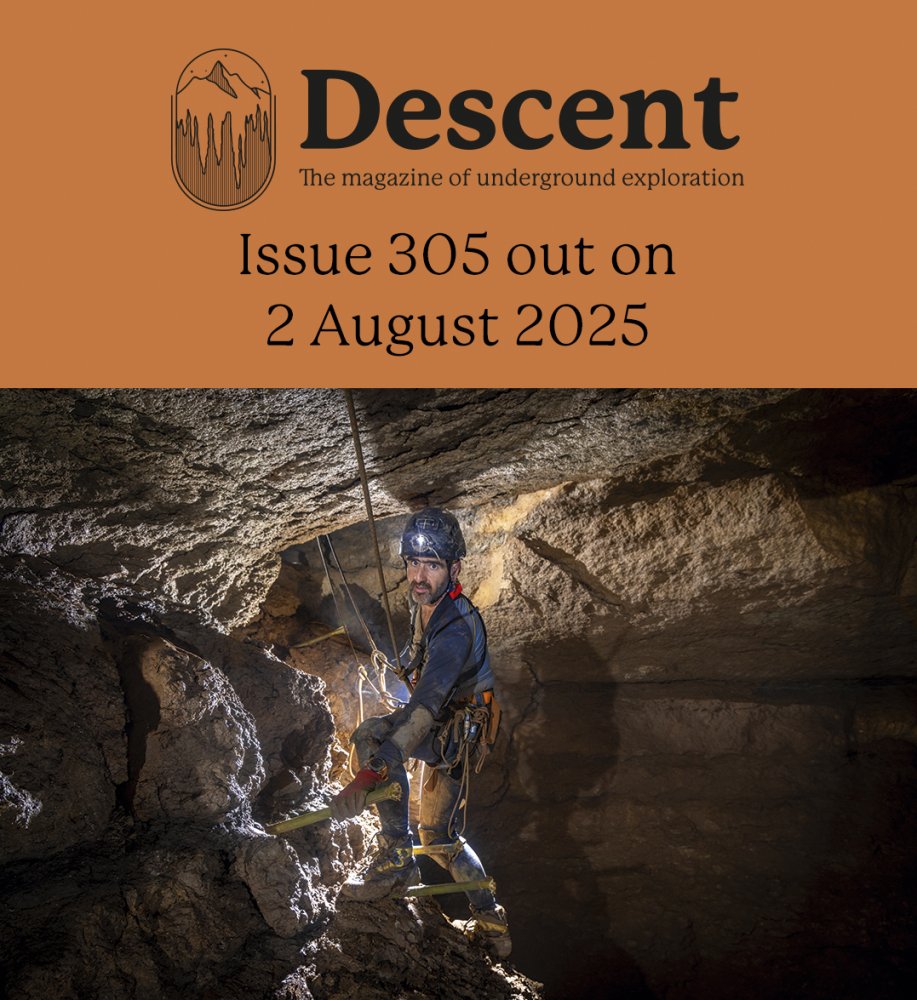Peter Harvey writing about OFD:
"We had also been joined by a girl called Joan and a caver from Yorkshire, whose name I never knew. We all struggled into the small entrance; cave digs are notoriously only just big enough to get through. After about 20ft of crawling we were able to stand up, and in another 30ft or so we were on the edge of a lake nearly 20ft. long and at least 6ft. deep. Bill said it was traditional to top it up, so we did, that is all except Joan who was not blessed with the necessary external plumbing."
Gwyn Tudor also gets a brief mention:
Anne and John Parkes were there when climbing Maypole, and another time:
'At the bottom of the drop there was also a very tight passage which eventually finished near Idol Junction, first traversed by Lewis Railton and Peggy Hardwidge. It was with great difficulty that they succeeded in completing it, a feat which involved the removal of some of their outer garments and it is said that when they eventually emerged into the West Leg it was rumoured that they were wearing each other’s trousers. This passage is not visited very often and was named “Peggy’s Purgatory”.'
Don Coase and Peggy also found Starlight Chamber in the Rawl Series, and she was involved in another maypole climb, before:
"We managed to push Peggy Hardwidge into a hole in the floor. She did manage to get in a few feet and actually see water flowing, but the place was so tight that there was no hope of getting through into any reasonably sized passage." &
"The prospects in this area now looked very poor and so we transferred our attention to the right hand side of the choke. Soon after we started, we reached a window in the wall in which we could hear water. We pushed Peggy into the hole but the place was much too tight and also it gave the impression it was going down to a sump, so we pulled Peggy out and retired for a think."
Bit of a theme, continued below!
"We had visited Sinc y Giedd several times during the winter of 1946/47 and had examined a number of small holes in the vicinity of the sink but we never managed to find the hole Bill had found. We uncovered one small bedding plane which looked quite promising as it obviously got bigger inside. It was much too small for Ian or me, but we had two girls with us, Brenda and Phyllis.
Brenda managed to squeeze through the nine inch space but Phyllis, who was complaining that her chest was too big, got no sympathy and was told, “Stuff them under your armpits and get in there”. Unfortunately there was only 100ft of bedding plane and nothing else, so we decided to dig at the main sink where Bill claimed he had some success."
It's not clear if this was Phyllis Millward, who later helped start digging out Hunters Hole along with her husband Leslie (who passed away not long after), and in 1951 she was mentioned in the Bristol Evening Post at the OFD rescue (they were also producing the Wessex journal at this time, whilst Winifred Hooper was Hon Sec of their London group. Phyllis subsequently married Peter Harvey in 1954):
"Among those who joined the Swansea
Valley rescuers was Mrs. Phyllis Miliward, of Bristol. Wearing an oilskin suit, she repeatedly made trips into the caves, emerging wet through."
"[The cottage was known as 'Penbont' and has since been demolished as a result of road realignment.] This was very convenient, being both close to the caves and the Gwyn Arms. We had fitted it up with about a dozen bunks and facilities for cooking. The girls were still accommodated at the Gwyn as Arthur Hill, the club secretary, thought that the local people in the valley would disapprove if they slept in the same building as the men. This was quite an inconvenience as we usually rose in the morning about 5am and this meant instead of just kicking them out of their bunks, somebody had to run to the Gwyn, a half a mile away, to throw stones at their window in order to get them up for breakfast. It seems a very early start in the morning after the night before but we could not afford to come to Wales very often because of the petrol situation. Although we always tried to drink the Gwyn dry every evening, it was only the wartime watery brew, which did not seem to do the damage that more modern beers seem to manage."
Brigadier Aubrey Glennie's niece Mary Hazelton is also mentioned.
Peter's reminiscences continue with pant Mawr pot then into the 1950s at tunnel cave and OFD2.











